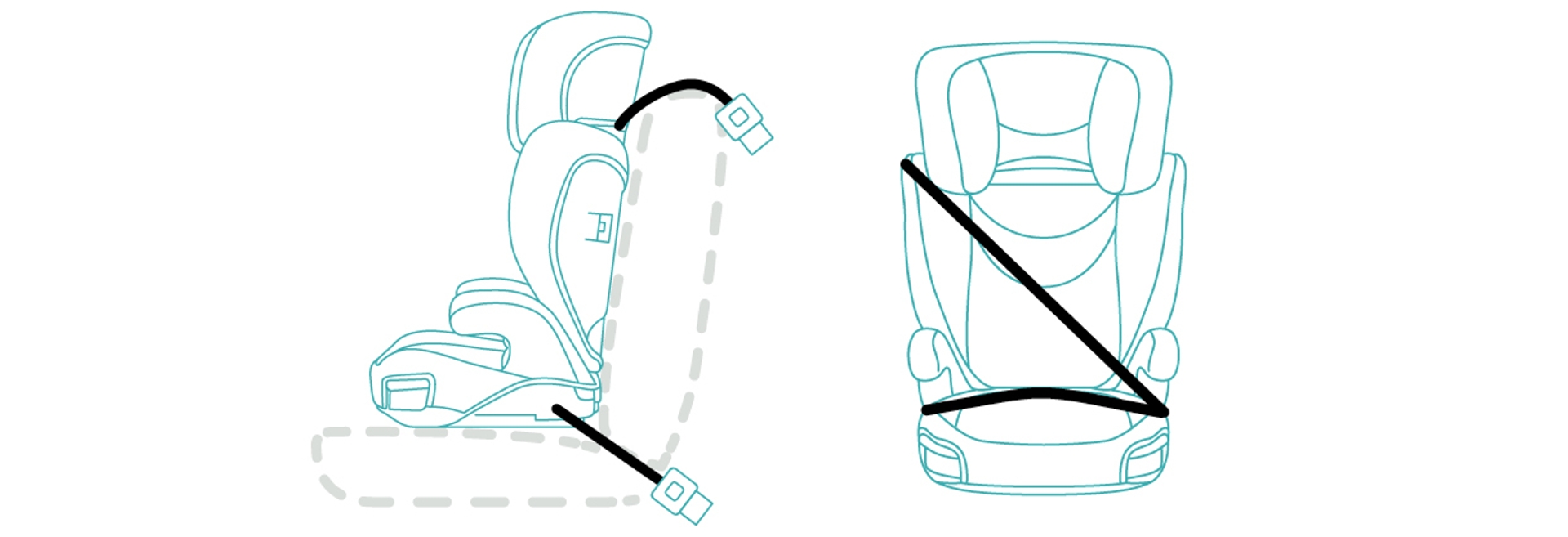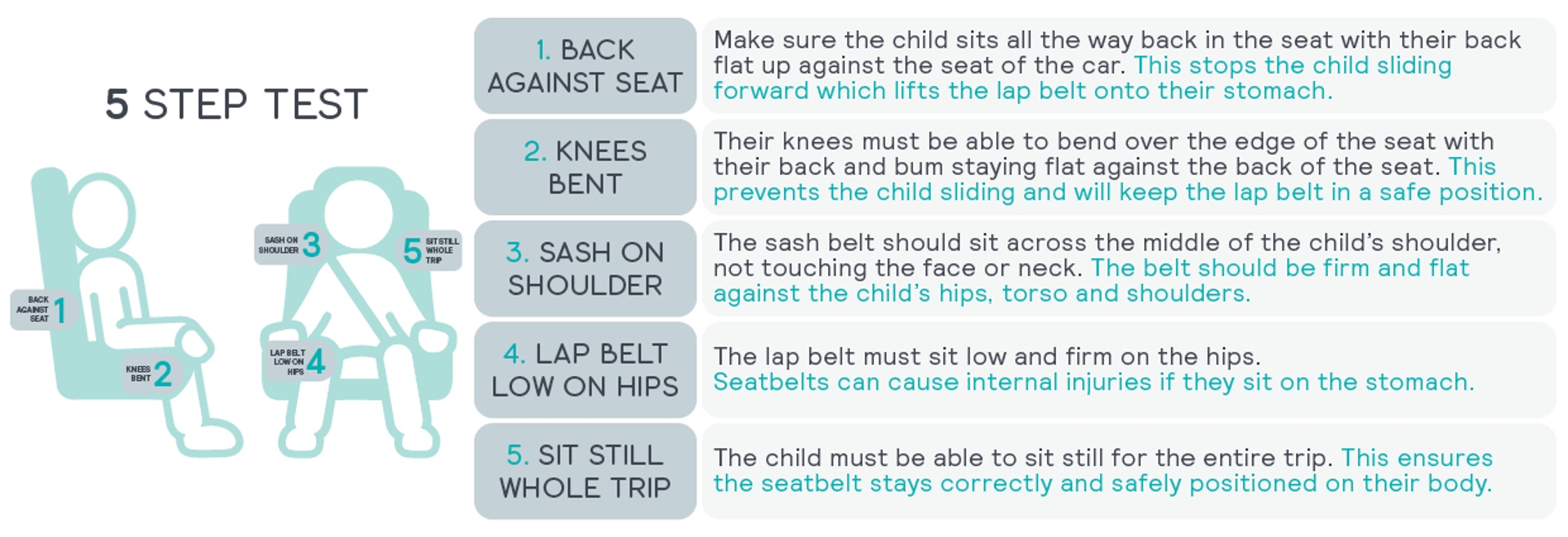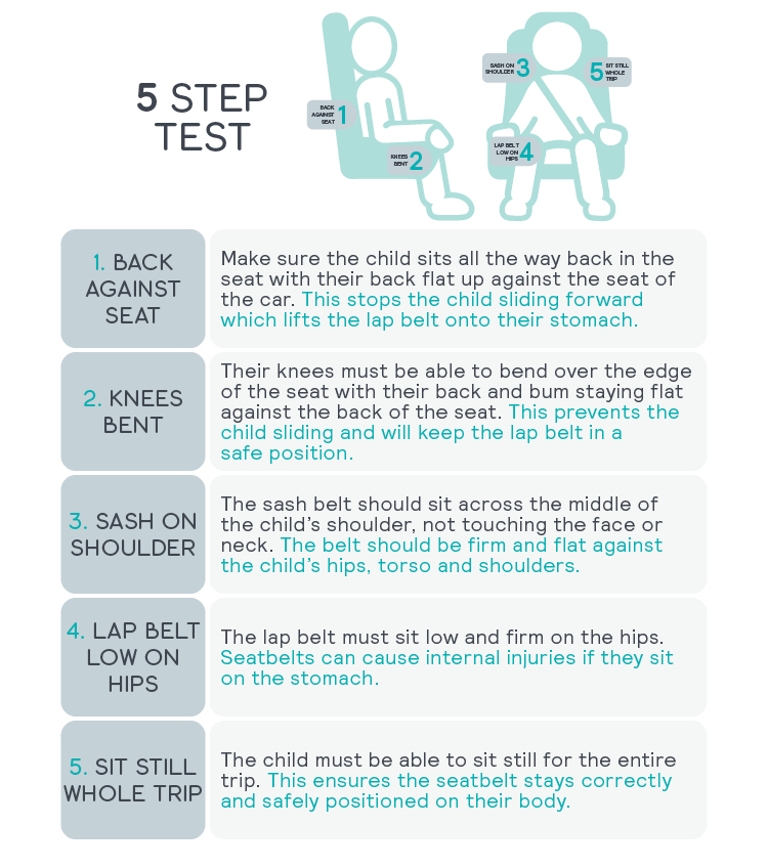Everything you need to know about booster car seats for kids

Car seat type: E, F (forward-facing, booster only). Age range: 4 years* until outgrown.
*This age range is a guide only. Your child may fit a seat for a longer or shorter amount of time depending on their seated height.
What's included in this guide:
- Benefits and drawbacks of a booster car seat
- When a child can use a booster seat
- How to know when to stop using a booster seat
- Features to look for when purchasing a seat
- Information on second-hand booster seats.
What is a booster car seat?
A booster seat is a type of child car seat designed to ‘boost’ your child up to allow an adult seat belt to fit their body properly. Some come with a top tether strap, but others simply sit on top of the adult seat.
Is it worth buying a booster seat?
If your child is over 4 years old, there are a range of different seat types you could choose depending on their size. To help you decide if a booster seat is best for your family, here are some potential pros and cons.
Benefits of using a booster car seat:
- Booster car seats can be convenient to move between vehicles as they are generally easy to install.
- Untethered booster car seats can be used in single-cab vehicles that don’t have an anchor point, allowing your child to be a passenger in one of these types of vehicles.
Drawbacks of using a booster car seat:
- Booster seats use an adult seat belt, which may not distribute force across your child’s body as effectively as a full harness may.
- Adult seat belts are easier for children to pull away from their body, slip arms from underneath, or shift during car trips, meaning they can end up out of place and not being as effective at restraining your child in an accident.
- If you have two or more seats next to each other, it can be tricky to reach down between them to access the seat belt buckle.
When can my child use a booster seat?
Booster seats can be used from when your child is4 years old, provided they fit the seat. Before switching to a booster seat, ensure they are tall enough to meet the entry marker of the seat, and are mature enough to keep the belt properly positioned when travelling.
If they aren’t tall enough to move to a booster seat, or you want to keep them harnessed for longer, you can also consider an extended harnessing seat which can generally fit children until around 8 years old.
When can my child stop using a booster seat?
Legally, a child must be in a child car seat until they are at least 7 years old. We recommend keeping your child in a car seat until they are at least 145cm tall and can pass the 5-step test. To pass this test, your child should be able to:
- Sit with their back against the back of the regular car seat.
- Have their knees bend in front of the seat cushion.
- Comfortably have the lap belt across their hips and touching their thighs.
- Comfortably have the sash belt across the middle of their chest and not digging into their neck.
- Remain in this position for the duration of your car trip.
While typically a child is around 145cm before they can sit in the proper position without a booster seat, it’s really dependent on your individual child, their physical build, their temperament, and your vehicle car seats and seatbelt settings, so be sure to check each of the 5 steps above before making this big move.
Tip: while it’s exciting to see your child grow up, remember that being appropriately positioned in the car is extremely important. In Australia, land transport accidents are the leading cause of death for children aged between 1-14 years old, so avoid ditching your child’s booster seat just because you have celebrated their 7th birthday and instead look for readiness using the 5-step test.
What features to look for when choosing a booster car seat
While booster seats typically have simpler designs than harnessed seats, there are a few things to look out for when you’re shopping for a new booster.
Anti-submarining
Submarining is when the forces of an accident cause your child to slip down under the seat belt, which can lead to serious abdominal injuries. Booster seats are required to have an anti-submarining design to prevent this from happening. Anti-submarining can be achieved by the structure of the armrests or seat base incline, or by an inbuilt slide-guard which ensures the seatbelt stays low across a child’s hips.
This is why it’s so important to ensure your child’s seatbelt follows the correct path when using a booster seat!
Carseat dimensions
If you have a vehicle with plenty of room for the whole family, this won’t matter as much. But if you have a vehicle where space is limited (this can be the caseregardless of how big a vehicle is on the outside), or you have multiple seats to install in one row, you’ll want to think about the dimensions of the booster. While boosters do tend to be a bit narrower than harnessed seats due to their design, remember that you’ll want enough room to reach down between the seats to access the seat belt buckle.
And don’t forget to think about your vehicle’s general height and roof shape – some cars have ceiling angles for the side seats that make it impossible to extend a headrest to its highest setting. If you can, pop the seat in your car at its maximum height to test it out before committing to the purchase.
Adjustable size settings
Every kid is built differently – some are wide, some petite, some have long torsos and other have long legs. Having more options to adjust the seat makes it more likely your child will find it comfy to sit in, and comfy kids are less likely to wriggle and whinge while you’re trying to drive.
For bigger kids, some models have expandable wings and higher maximum height settings to allow you to get longer from the booster.
Tether strap
Boosters can come with or without a top tether strap. The tether strap is an extra point in which the booster is secured into the vehicle. While your child can use either type after they turn 4, if your booster has a tether, you must install it using the tether.
Should I purchase a second-hand booster seat?
Even when a seat looks to be intact without any damage, there are some forms of wear and tear you won’t always be able to see.
There are a few questions you should ask before using a second-hand restraint:
- What is the full history of the booster seat? Has it been in an accident? Has it been stored and washed according to the manufacturer’s guidelines?
- Has the booster seat been visibly damaged or modified in anyway?
- Is the booster seat in line with current manufacturing standards, or does it meet previous versions of the standard?
- Is the booster seat complete with all the components in place?
Are you looking for more information before investing in a booster seat? You can learn more on our car seat information page.
Alternatively, if you’ve already decided you are ready to pick up a booster seat, you can browse our range of booster seats online.






